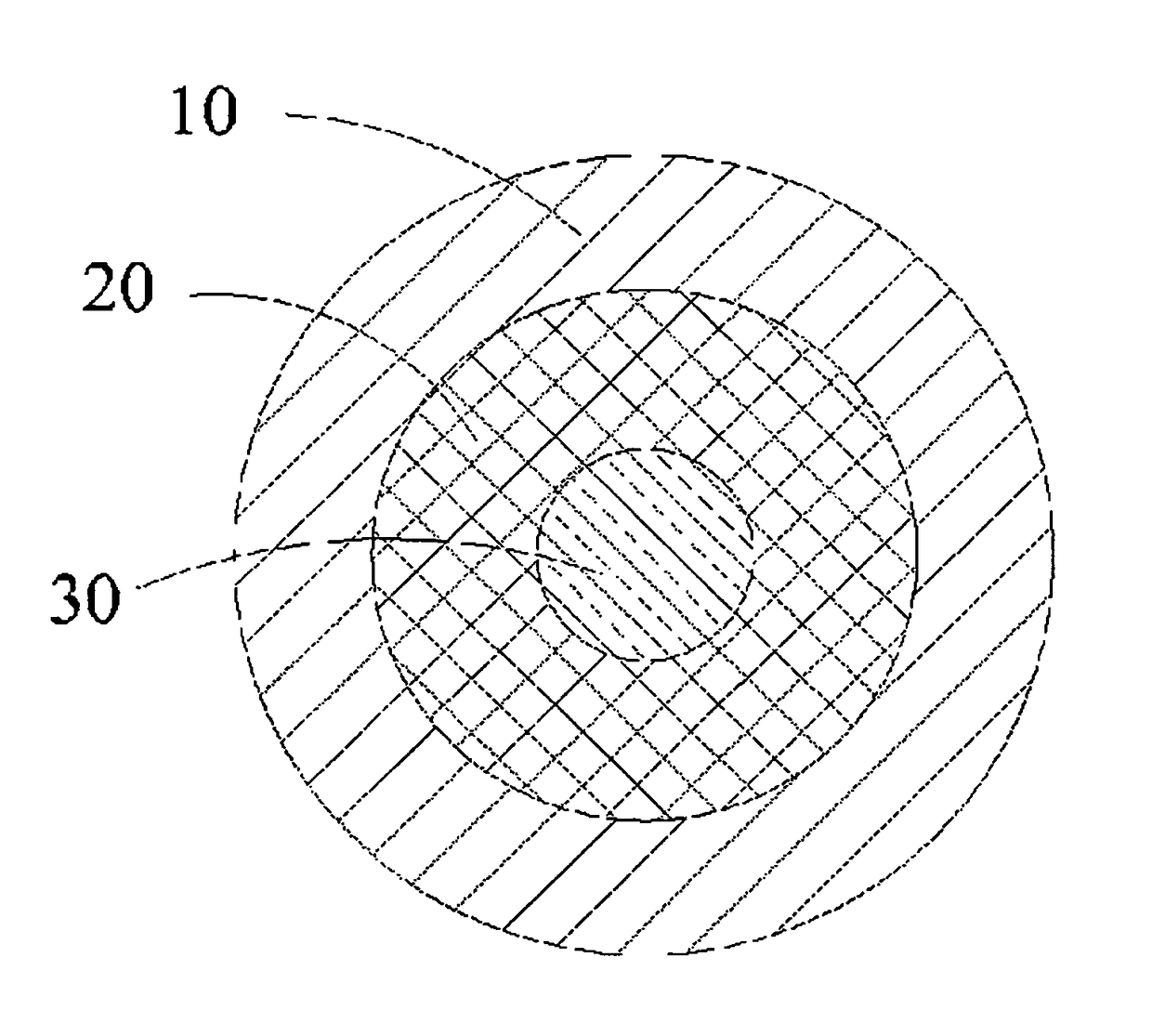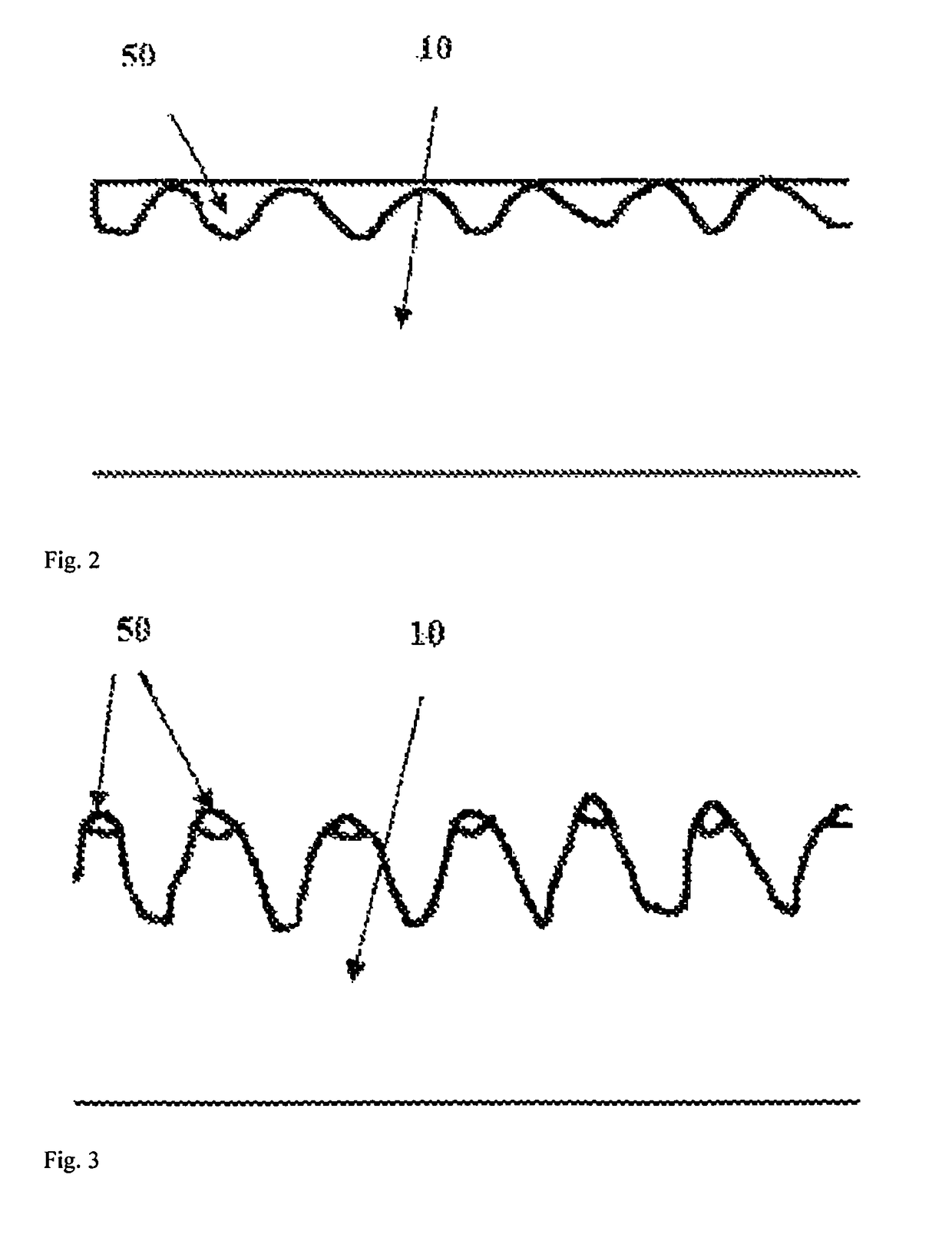Bioabsorbable medical device or medical device component and preparation method thereof
a bioabsorbable, medical device technology, applied in the direction of prosthesis, solid-state diffusion coating, surgery, etc., can solve the problems of delayed endothelial healing, long-term potential risks, limitations of carrier drug stents, etc., to achieve perfect balance point, increase radial strength of stents, and improve support force and flexibility of stents.
- Summary
- Abstract
- Description
- Claims
- Application Information
AI Technical Summary
Benefits of technology
Problems solved by technology
Method used
Image
Examples
embodiment 1
[0071]According to a well-known stent grid design, the surface of a pure iron pipe is engraved by laser to be prefabricated into a pure iron vascular stent with an outer diameter of 3.6 mm, an original wall thickness of 220 μm, and a length of 18 mm. When the stent is dilated by a balloon to 12 mm, the coverage rate of a metal grid on the surface of the stent on the side wall of the stent is 9.6% or so. Then, the stent is treated by the following steps.
[0072]First, the prefabricated pure iron stent is cleaned as follows: the pure iron stent is immersed in an electrochemical polishing solution to be subjected electrochemical cleaning for about 30 seconds at room temperature, under the conditions of introducing current of 1.6 A and voltage of 12 to 14V or so. The formula of the electrochemical polishing solution is as follows: anhydrous acetic acid and perchloric acid with a mass concentration of about 70% are uniformly mixed according to a volume ratio of 85 to 15. When other pattern...
embodiment 2
[0084]According to a well-known stent grid design, the surface of a pure iron pipe is engraved by laser to be prefabricated into a pure iron vascular stent with an outer diameter of 1.6 mm, an original wall thickness of 100 μm, and a length of 18 mm. When the stent is dilated by the balloon to 3 mm, the coverage rate of a metal grid on the surface of the stent to the side wall of the stent is 13% or so. Then, the stent is treated by the following steps.
[0085]The cleaning step described in embodiment 1 is applied, but with the current of 0.7 A instead, the voltage between 8V and 10V or so, and the electrochemical cleaning time of 15 seconds instead; as a result, a cleaning effect similar to embodiment 1 is obtained. Alternatively, as the current is increased to 0.9 A, the electrochemical cleaning time is reduced to 10 seconds and the removed amount is about 5 μm (the inner and outer walls are respectively thinned by 2.5 μm). Ion nitriding treatment is carried out after cleaning, and ...
embodiment 3
[0090]The corresponding steps described in embodiment 1 are adopted to produce the same pure iron vascular stent, and the pure iron vascular stent is subjected to ion nitriding treatment after being cleaned. In the embodiment, the ion nitriding treatment equipment and a part of parameters are the same as those of embodiment 1, and the parameters different from embodiment 1 are set as follows: the nitriding temperature maintained at 470 to 500° C., the nitriding time being 60 minutes, and the thickness of the compound layer 50 formed on the surface of the stent being 3 to 4 μm. After subjected to nitriding treatment, the stent is further subjected to polishing treatment in order to completely remove the compound layer 50 so as to ensure that the stent surface is smooth and clean. The polishing treatment step described in embodiment 1 is applied, but just the polishing time is prolonged by 10 seconds so as to uniformly remove the thickness of the stent by about 50 μm, and the surface ...
PUM
| Property | Measurement | Unit |
|---|---|---|
| pressure | aaaaa | aaaaa |
| pressure | aaaaa | aaaaa |
| wall thickness | aaaaa | aaaaa |
Abstract
Description
Claims
Application Information
 Login to View More
Login to View More - R&D
- Intellectual Property
- Life Sciences
- Materials
- Tech Scout
- Unparalleled Data Quality
- Higher Quality Content
- 60% Fewer Hallucinations
Browse by: Latest US Patents, China's latest patents, Technical Efficacy Thesaurus, Application Domain, Technology Topic, Popular Technical Reports.
© 2025 PatSnap. All rights reserved.Legal|Privacy policy|Modern Slavery Act Transparency Statement|Sitemap|About US| Contact US: help@patsnap.com



